Central Asia - Uzbekistan - Tashkent
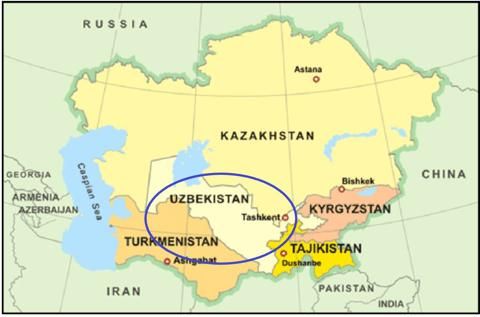
Uzbekistan is the most densely populated of the Stan countries and as you can see from the map above, is surrounded by the other four. Its name is a combination of the Turkik words uz (self), bek (master) and the Persian suffix stan (country). This essentially translates as ‘Land of the Free’ - the country also gained independence in 1991.
Cotton accounts for 17% of Uzbekistan’s exports. It’s often referred to as ‘white gold’ because it is such a profitable industry. For decades Uzbek authorities would use students, government employees and even doctors to pick Uzbekistan's cotton fields. Gulya, our guide, was one of those students years ago, but thankfully these days the farmers must employ their labour.
Annual cotton production averages around 1 million tons of fibre, accounting for 4-5% of the world’s overall cotton production. It’s the 8th largest producer and 11th largest cotton exporter in the world.1
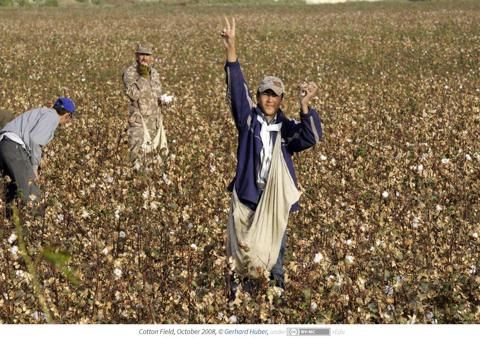
With gigantic power-generation facilities from the Soviet era, an ample supply of natural gas, Uzbekistan has become the largest electricity producer in Central Asia. It is also rich in oil and gas, uranium and rare earth metals.1
It’s said to be the 8th largest producer of gold accounting for around 44% of the country’s exports and has the largest open cut gold mine in the world - after being in Kalgoorlie, Western Australia recently, it must be quite a sight.1
The Kalgoorlie Super Pit is approx 3.5 x 1.5kms and over 600m deep with an output of 14 tonnes annually. Checking Wikipedia, the stats dated 2012 say the Muruntau Open Pit measures about 3.5 x 2.5km and extends to a depth of 560m - the size is similar but the output is listed as a whopping 56 tonnes annually!1
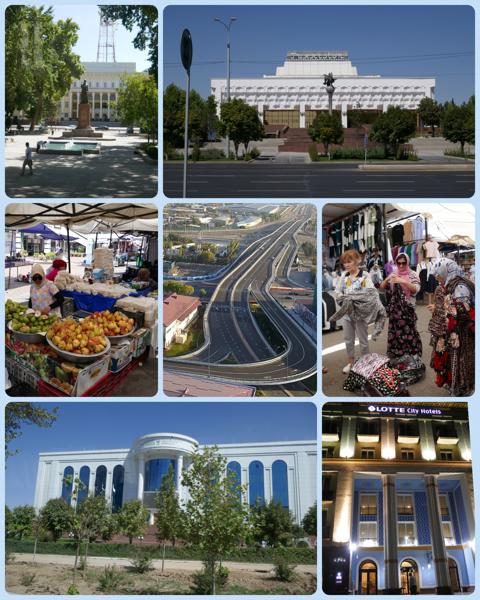
It was obvious on arrival in Tashkent, the capital, we’d landed in a cosmopolitan city - 14 lane highways with flyovers, smartly dressed businessmen from China, South Korea and western countries - Gulya said many joint venture companies are based here, English widely spoken and a diverse population of Koreans, Caucasians and Tatars.
After a massive earthquake in 1966, leaving 300,000 homeless, the government decided to build a model Soviet city and today modern buildings abound.
The population is young too which was obvious when fellow traveller, Leo and I decided to explore the metro one evening - no one seemed over 50. (Look out for the separate post on the Tashkent Metro soon).
Markets are fabulously vibrant places and Chorsu Bazaar was the same as we wandered around the largest bazaar in Central Asia, in existence continuously since at least the Mongol invasion. Chorsu is a word from the Persian language, meaning "crossroads" or "four streams".
The marvelous blue dome (said to be the largest dome in Uzbekistan) of the bazaar has became one of the symbols of Tashkent even though it was built after the 1966 earthquake, blending into the architecture of Central Asia with its centuries-old tradition of trading domes which we will see in Bukhara and Samarkand.
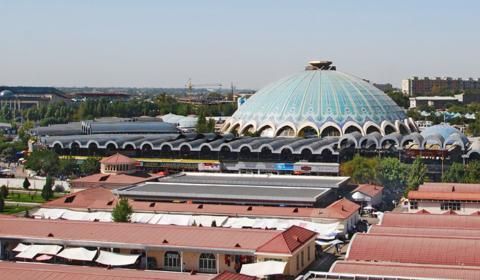
We visited Independence Square - like Kazakhstan and Kyrgyzstan, a massive plaza, which was known as Lenin Square in Soviet times. It’s surrounded by the president’s residence and stately government buildings.
Celebrations of important days like Labour day and Victory day take place here and is now marks Uzbekistan’s independence.
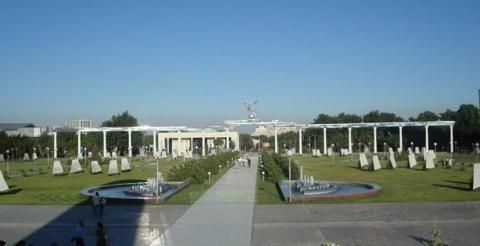
Lenin was replaced by the Independence Monument - a expansive marble colonnade featuring a globe, crowned with storks - representing happiness and prosperity.
In the surrounding park is the Alley of Fame and Memory – two galleries with carved pillars featuring 14 stelae (the number of country’s regions) bearing the memory books with the names of all Uzbeks fallen on the battlefields of the World War II. Here too is the monument of the Sorrowful Mother and the eternal flame.
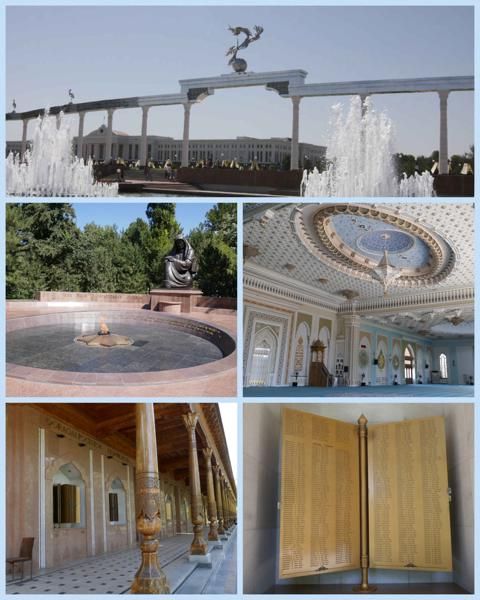
With Gulya, we continued exploring this charming city. Like all the Stan's Uzbekistan is predominately Muslim with a myriad of buildings adorned with mainly blue intricate mosaics.
The Hazrat Imam Mosque is beautifully decorated. Islamic art is intricate and I find it mesmerising. Just recently they are allowing female worshippers into a separate more modest section. Another sign of liberal times in Uzbekistan.
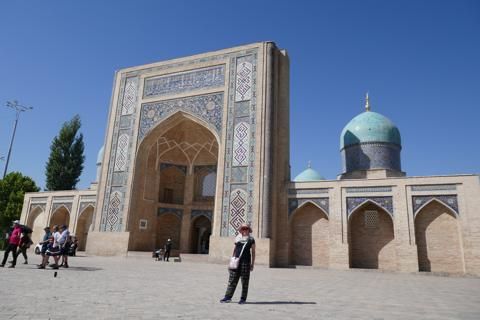
The Khast Imom complex is a large plaza surrounded by impressive examples of Islamic architecture. It was a religious centre for centuries after the first imam of Tashkent was buried here.
Hidden behind willow trees the mausoleum of Abu Bakr Mohammed Kaffal Shashi, a scholar and poet from the 10th century, is a small atmospheric brick building.
Legend goes that women who are unable to conceive should smear the dust of the tomb on their face for a successful pregnancy.
No photos were allowed in the Muyi Mubarak library which holds a collection of ancient Qurans and claims to have the oldest Quran in the world, dating back the 7th century. (The library can be seen in the collage below - top righthand image - it's the tiny building to the right in the square).
In one of Timur’s campaigns he destroyed Iraq and relocated this Quran to Tashkent. In tomorrow's post we will learn about Timur.
The 16th century Barakhan Madrasah is the most impressive building in the complex. Madrasahs are schools for Islamic instruction but the classrooms here have been transformed into small shops selling traditional souvenirs.
During our walk we passed a small palace of the Romanovs, which belonged to the first cousin of Tsar Nikolai II, who after a scandalous affair with a prominent American lady, was deported to Tashkent to mine gem stones.
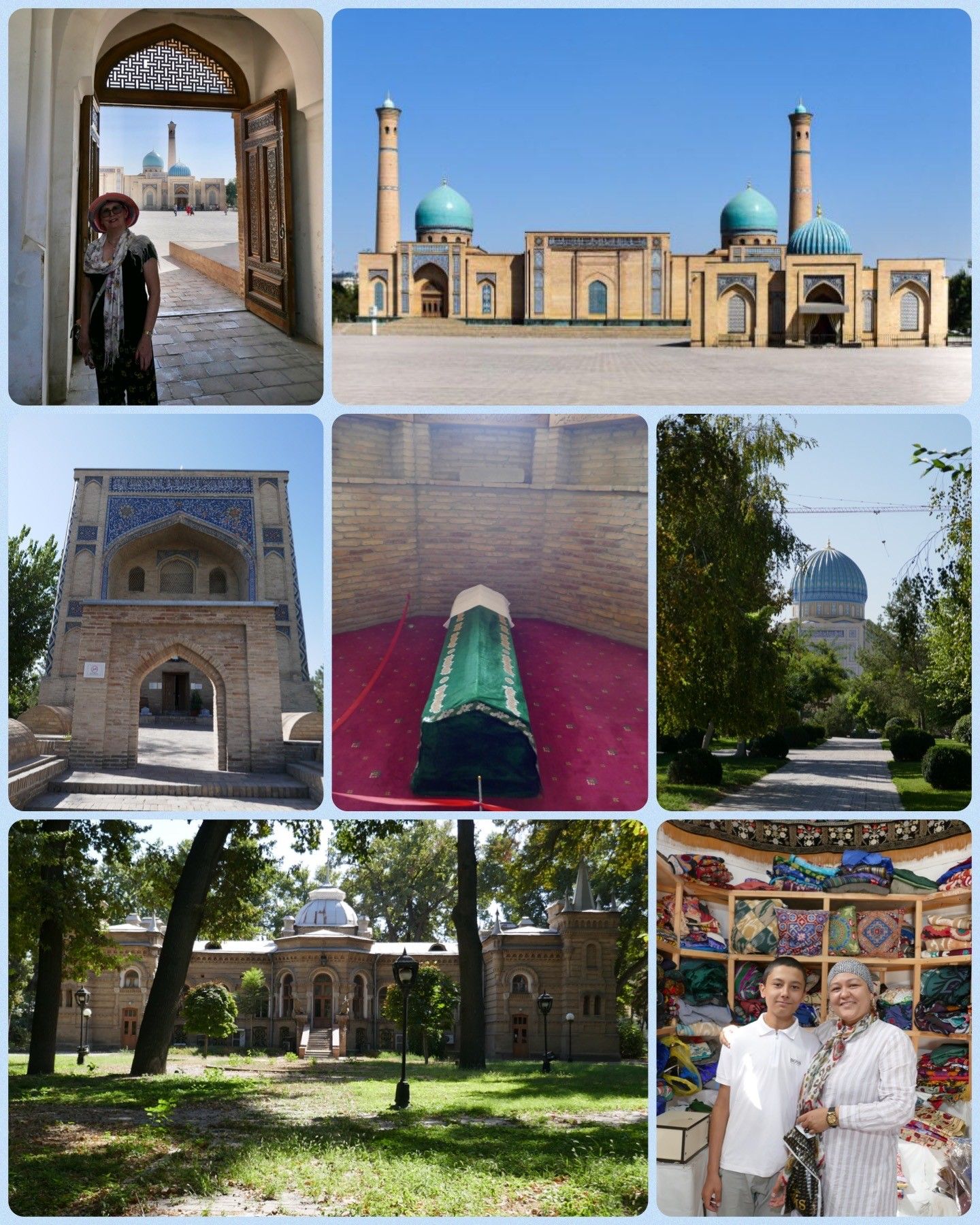
Of course there is alwasy time to eat. Plov is the traditional cuisine of Uzbekistan and the other Stan's as well. The dish consists of rice, onion, carrots, and meat (usually lamb or beef), cooked in a large cast-iron pan. It’s a bit like fried rice but without the egg. Plov is a heavy dish and to my taste oily - but the locals love it and eat it at every opportunity.
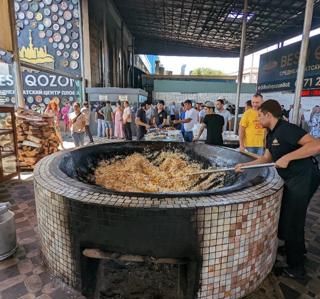
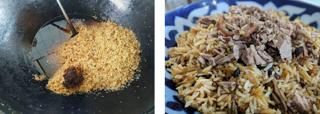
As I mentioned above, in tomorrow's post we will learn about Timur.
Credits:
1 Wikipedia
